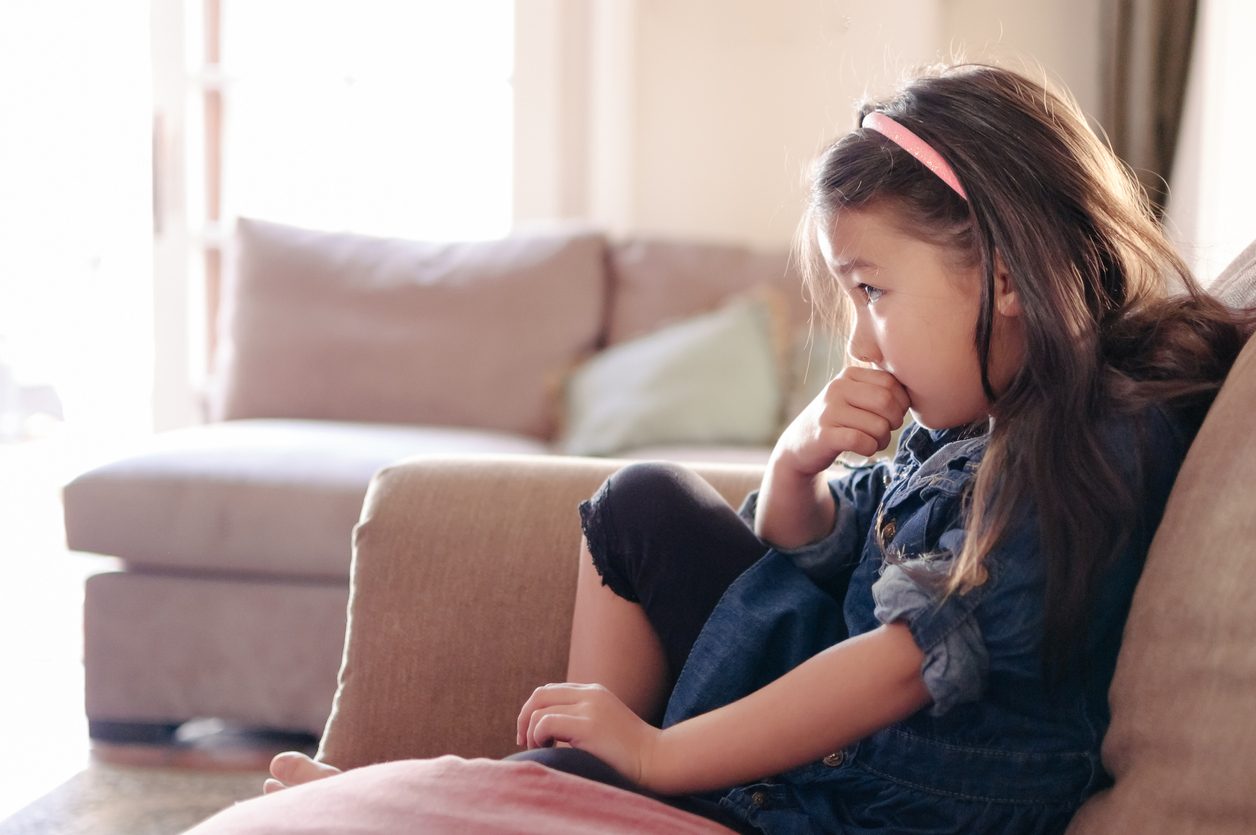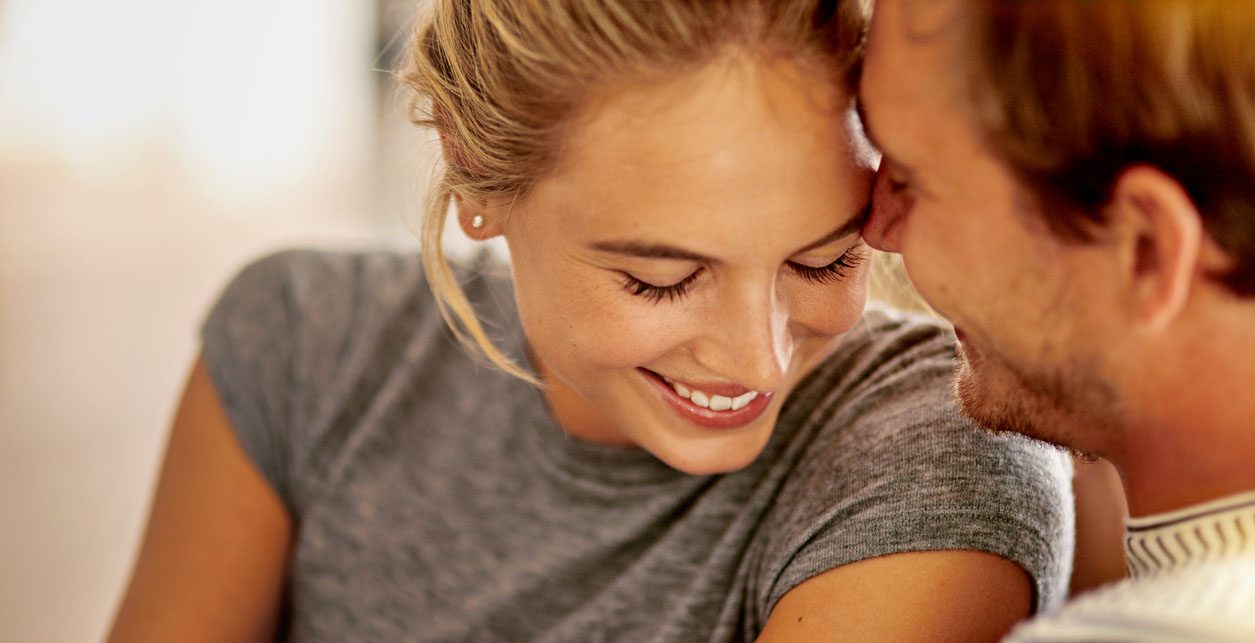Anxiety in Children
This article is based on scientific evidence and clinical experience, written by a licensed professional and fact-checked by experts.
Posted: January 27, 2020
Estimated reading time: 4 minutes
In This article

Anxiety…just the word may make you feel nervous or on edge. Perhaps, this word elicits thoughts of worry: things you need to get done, assignments at work, or busy schedules. For adults, anxiety can be debilitating and confusing. For children, anxiety can be scary and frustrating. The following will discuss unhealthy versus healthy anxiety in children and coping strategies to help your child with anxiety.
Unhealthy Vs. Healthy Anxiety In Children
Most adults would say they could live without anxiety, but, in reality, anxiety has a purpose. Anxiety helps you meet deadlines, get things done, and get to appointments on time, or it should. There is a level of healthy anxiety that all people experience. This being said, children can also be expected to experience some level of anxiety: whether it is with getting homework done, studying for a test, or thunderstorms. While there is a healthy level of anxiety that you can expect your child to experience, there is a point when it is no longer healthy. If you notice your child having difficulty doing daily activities, spending time with friends, or living a life of a normal child, then your child’s anxiety may be impacting his functioning. Specifically, mental health professionals define the boundary between healthy anxiety and unhealthy anxiety is if the anxiety is impacting your child’s functioning. For example, many children are afraid of thunder, but if your child refuses to go to school or to other activities because there is a possibility of a thunderstorm, this would be impacting his functioning.
To discuss the types of anxiety disorders seen in children is beyond the scope of this article. If you feel your child is struggling with anxiety more than would be expected than a child his age, it would be best to check with your pediatrician to see if your child could use extra help with coping with anxiety.
Helpful Coping Strategies For Children With Anxiety
Deep Breathing
One strategy to reduce the physical symptoms of anxiety which will help your child be able to think more clearly is deep breathing. First, explain to your child the need to get as much air into their body as possible to help their anxiety go away. A fun way to explain this is to have your child pretend their stomach is a balloon. Have them breathe in as much as they can to have their stomach stick out like a balloon then have them breathe out. Specifically, it is helpful to teach children to close their eyes and breath into the balloon in their stomach and count to three: Breathe in 1..2..3… Next, instruct your child to deflate their balloon and count to three: Breathe out 1..2..3… It is most helpful to have your child practice this a few minutes per day before going to bed.
Progressive Relaxation
The name gives it away: relaxing your body slowly or progressively. Specifically for anxiety in children, it is best to explain when they get anxious the muscles in their bodies tighten up. It might be helpful for them to sit on the floor with their legs bent and their arms around their legs like a ball, this is what it feels like to have tense muscles. Next, have the child stretch their entire body on the floor, this is what it feels like to be stretched and relaxed.
To start with the progressive relaxation, have the child sit in a comfortable chair or lay on the couch or his bed. Next, have the child close his eyes. Starting with his feet and moving up his body to his head have the child tighten each muscle group for three seconds and release the same muscle group for three seconds. Direct the child to think about how each muscle group feels when it is tense and relaxed. Make sure to have the child continue his deep breathing while working on relaxation. It will help him feel more relaxed! If it is helpful, the child can think of a happy image while doing this activity: going swimming, playing at the park, seeing his mom and dad, or playing with friends.
Visualization
This technique works to help your child to visualize a safe and happy place in their mind. He can then use visualizing this place when he is feeling anxious to help calm the physical and emotional symptoms of anxiety.
Visualization Process
- First, have your child sit in a comfortable position continuing to practice his deep breathing. You can do visualization after working on progressive relaxation. It will make it so your child is more relaxed. It is not necessary to do progressive relaxation first, just the deep breathing. Ask the child to think of his favorite place: a place that is fun and safe. It can be the beach, swimming pool, backyard, grandma’s house, mountains, or his house.
- Next, have your child see himself in this favorite place. Encourage him to visualize what the place looks like. If you know the place he is thinking of, it can help to have him think about the specific aspects about the place ( the sand on the beach and the ocean water).
- After this, have him visualize what he smells at his favorite place. This could be the ocean water, chlorine from pool water, fresh cut grass, or something baking.
- Next, have your child visualize what he hears: ocean waves, creek water, lawn mower, grandma talking, or other children playing.
- Now, encourage your child to feel around the favorite place. He might feel the sand under his toes, the grass on his fingertips, the cool metal of the playground slide, or his grandmother’s hand.
- Lastly, have him visualize the taste of his favorite place, if applicable. This is more appropriate if someone’s favorite place is at home or grandma’s house.
When Your Child Feels Anxious…
Remind your child he can visit his favorite place whenever he needs to feel calm and safe. Encourage your child to walk out of his favorite place and be back in the room he is physically in. It is important to wait for your child to take his time to peacefully comeback to his physical location after being in his favorite place. After your child opens his eyes, ask him about how he is feeling. Remind him he can feel calm in his favorite place whenever he is experiencing intense emotions or anxiety.
Distraction/Enjoyable Activities
When anxiety feels overwhelming and your child struggles to use other techniques, a distraction from the anxiety may be applicable. The concept is relatively simple: identify ways your child can distract himself from his anxiety. It can be most helpful to create a list of ten activities your child can do when he is feeling anxious. Make sure the list contains a variety of activities because some activities will be helpful in certain situations and others may not. For example, your son can go and play baseball outside while at home, but he cannot do this at school. Activities such as talking to mom, playing on the playground, playing with playdough, petting the family pet, doing a puzzle, coloring, making a model airplane, watching a movie, or playing a game are a few examples. Make sure to ask your child what he wants on the list. The list is not helpful to your child if all the activities are things he does not do or does not want to do.
Caring
One of the most important actions you can take as a parent with a child who is struggling with anxiety is to show him you care. What your child needs most is to feel he is not alone. You will be there to help him find ways to improve his anxiety. If you feel like you do not know how to help, the best thing you can do is ask help from your primary care physician or a mental health professional. When you do not know the answer, find someone that does.
Back to topThis article is based on scientific evidence and clinical experience, written by a licensed professional and fact-checked by experts.
About the Author

September Trent
September Trent MS, LPC has a Masters in Counseling. She is also an Attachment Focused EDMR therapist trained by the Parnell Institute. She is a Licensed Professional Counselor (LPC), holding her license in Missouri.
Learn More About SeptemberIn This article
References
- Rapee, R. M., Wignall, A, Spence, S. H., Cobham, V., & Lyneham, H. (2008). Helping your anxious child: A step-by-step guide for parents. (2nd Edition). Oakland, CA: New Harbinger Public
- Biederman, J., Hirshfeld-Becker, D. R., Rosenbaum, J. F., Hérot, C., Friedman, D., Snidman, N., … & Faraone, S. V. (2001). Further evidence of association between behavioral inhibition and social anxiety in children. American journal of Psychiatry, 158(10), 1673-1679. [2]
- La Greca, A. M., & Stone, W. L. (1993). Social anxiety scale for children-revised: Factor structure and concurrent validity. Journal of Clinical Child Psychology, 22(1), 17-27. [3]
Share this article
View more articles

How to Revitalize Connection in a “Roommate” Marriage: Pt. 2 Physical Connection
By: Danielle Schaefer







